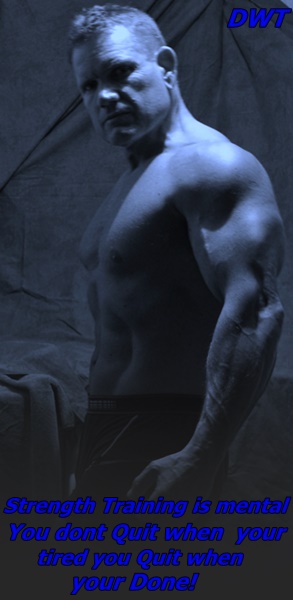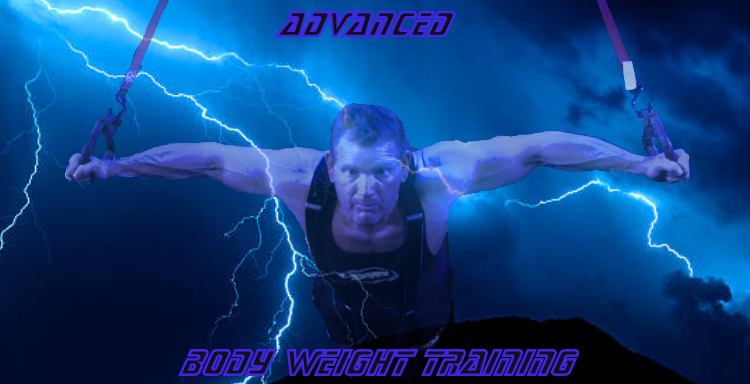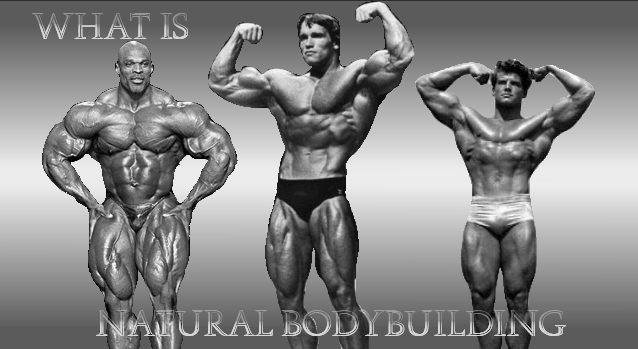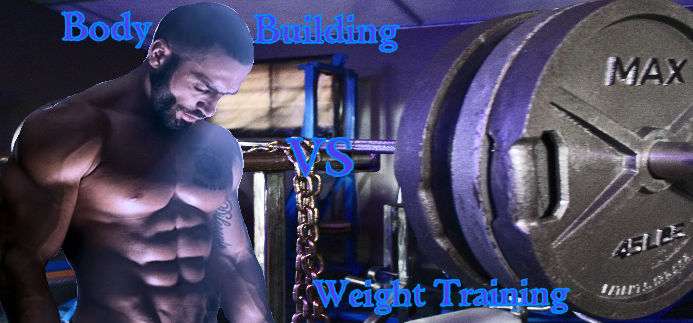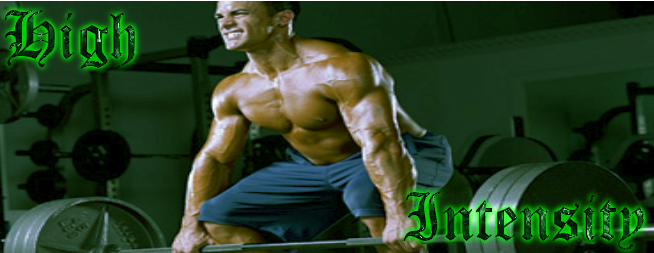Strength Training vs Bodybuilding
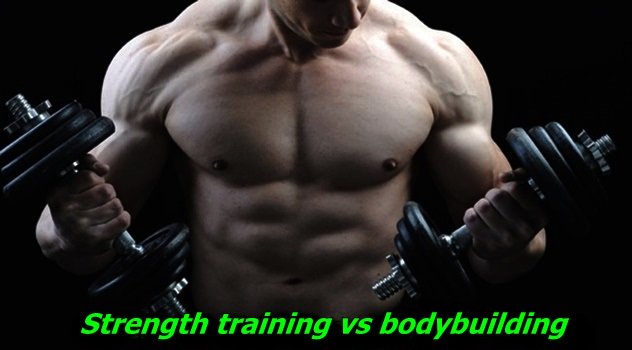
For any strength or physique athlete, strength training vs bodybuilding both have their vices. These training styles do differ... so, where does one style end and the other begin?
They can often have some overlapping tendencies into one another, so their ultimate use can only be determined by you and your goal!
So let’s put strength training and bodybuilding under the dynamic weight training micro-scope and find out!
Prelude
I would like to start by briefly touching on some of the differences in muscle physiology and some of the mental and psychological thought processes some of us have when we think of: strength training vs bodybuilding.
Most men prefer to watch a power lifting or a strongman competition over that of a bodybuilding competition.
This is a primal need, were competitive by nature; we have always enjoyed sports action and strength-based entertainment.
A strength athlete competing in a
strongman competition, more than likely will not train or diet even close
to a professional bodybuilder...
Yet the competitive bodybuilder stands on the stage alone...
Wearing only a skimpy pair of posing trunks, posing their hearts out to show the world how impressive he or she looks from the many hours of exhaustive hard work.
The hard work of a bodybuilder in the gym is seldom seen, it is the
aftermath of this work and dieting that gets seen, nothing more.
Most people will never know the hundreds of hours of behind the scenes training and dieting that has to go into building a quality competitive physique. Males are usually visually inspired when watching power and strength feats. But...
Men and women can also be deeply inspired and motivated by the striking visual effects of bodybuilding.
Lets define the differences between strength training vs bodybuilding to get a better understanding of where and which practices from each toolbox you can use to build strength, increase muscle and build a more athletically defined body.
The tools you use should be related to your goal, meaning: use the training method that best suits the end goal-be it, strength training or bodybuilding?
The Internal Art of Bodybuilding
Training for Muscularity:
hypertrophy occurs as the muscle is trained consistently. The covering of the individual muscle fibres actually thickens and toughens as do the tendons supporting the muscle. This change yields greater protection for the muscle, increasing its strength and size makes it less susceptible to injury.
This is typical as the body reacts to the new changes in stress its receiving from the resistance.
The increase in muscle size when it comes to strength training vs bodybuilding, is in no way proportional to increases in strength. Quite often very small increases in size may accompany great increases in strength.
As the muscle hypertrophy's, the fibres grow larger, rather than more numerous. Much of the increase in size can be accounted for by an increase in muscle sarcoplasm (fluid) in the fibre.
The total amount of stored glycogen and other chemicals involved in ATP production also increases dramatically. ATP or, (adenosine triphosphate), is simply - the energy stored in the muscle needed for muscular contraction.
As you continue further and deeper into your workout, the number and size of the myofibrils making up the muscle fibres increase. The ability to store more muscle sarcoplasm increases as well as your ability to generate more ATP (muscle energy food). this is the basic biochemistry for muscle growth.
The Body’s Adaptive Process to Stress
Guys naturally seem to have the mindset;
'if you’re strong you must be big'. So in order to get big, you must train as
heavy as you can. This is partially true,
but not totally, as each individual does differ slightly. I will go into this
more a little further down.
Bodybuilders specifically train to build individual muscle mass, quality, density and overall physique aesthetics, not to become weightlifters. All the way from beginners to advanced lifters in bodybuilding, can easily miss this fact.
The goal of strength or muscle, ultimately reflects intensity and type of training routine you use, the athletic goal decides the outcome.
On any given day or moment the body has one specific purpose: 'to survive'! Whether you’re working outside, in the office or training in your gym, your body decides the impact of what it’s feeling by assessing stress...
E.g., if you’re cold your body shivers if you’re hot your body sweats.
This relates the same in bodybuilding, the body measures stress levels that you are applying to it. the body responds by selectively adapting in a way that best suits it's chances of survival...
So what does this have to do with bodybuilding and increasing muscles size?
Molding your frame into a desired shape and imposing self-selected stress and continuously trying to increase your capabilities beyond their current state... increases this stress.
Increasing these limits in stress and hypertrophy are often linked to how strong you are mentally, meaning: (how much of the burning-sensation at the end of each set can you stand as the workout progresses).
In other words; how much stress you can handle through-out your workout will more or less decide how much you can increase total muscular size.

I have seen it so many times over the years as the going gets tough, a lot of guys don't get tough with the going: this is where you can see guys say things like, you need good genetics, bodybuilding programs don't work, or you can't get big without drugs.
I'm not saying none of this comes into play in bodybuilding. But here's the thing; if you want anything out of life that's worth having, you have to work for it. Bodybuilding on its own is one of the toughest and cruellest mistresses their is, but...it does pay back and handsomely with its own rewards.
If you want quality lean Muscle Mass to grace your body's frame you have to work for it. Genetics don't have as much to do with it as you might think. It is the belief in your goal and focus on that belief, that will decide and determine what type of body you build.
Mentally letting these ideas become the frame-work of your
thought process while you’re training becomes very important.
The mental and physical communication you have with the stresses of bodybuilding, e.g. linking the mind to the muscle communicates new growth and strength increases.
Experts repeatedly say: "muscles being trained, don’t know the difference between a heavier weight and a lighter weight", this is not entirety true.
Your body knows very well from the central nervous system to the muscles and the tendons that they’re attached to, there is more load-bearing stress: be sure you’re communicating with your body on every rep with a strong mental link as your training.
Communication is what hyper charges new growth.
In Bodybuilding Muscle Size Equates To Volume Training
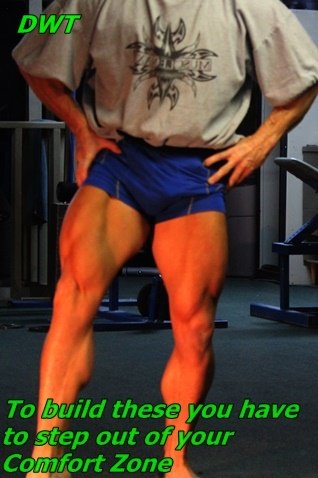
Again: confusion can enter this topic easily, you should inflict enough stress with resistance for hypertrophy to occur, but not so much that you become a weightlifter or total strength-based athlete.
This can vary from each bodybuilder; train with 75 to 85% of your one rep max. As an example:
If you can bench press 250 pounds for a (ORM), your regular working weight should be in the neighbourhood of between 180 and 210 pounds.
If you simply can’t get 10 or 12 reps. with this much weight, try decreasing it by 10 or 15 pounds and try again, this is about muscle hypertrophy not overall strength gains!
Believe it or not: the people in the gym that you go to; honestly don’t care how much weight you can lift.
How many sets?
This question can be a toughie, because there's so many variables to it. As a bodybuilder, you need to be more in-tune with yourself, seeing your physique honestly for what it is, but have the mental foresight to see what you want it to become.
With that in mind: learn to assess weak and strong points in your physique. The amount of sets to be performed for different body parts that are weaker will vary to each person’s physique and current conditioning level.
There are lots of different ways to attack weaker body parts with your Set ratios: at times I would do strength training sets of 6 to 8, consisting of compound multi-joint exercises such as...
The squat, dead lift, incline and flat bench press or bent
over barbell rows, etc. these lifts would be directed to the weaker body parts first.
I would then finish with specific isolation movements for weaker body parts, ranging from 4 to 6 sets for smaller body parts.
For larger ones I may bump this set range up, most of the guys I trained with as bodybuilders seem to find they had the best luck with volume training. In other words: effort was made at keeping the pump in the weaker body parts as a longer lasting effort.
For a list of some of the better compound and isolation exercises see (free weight training).
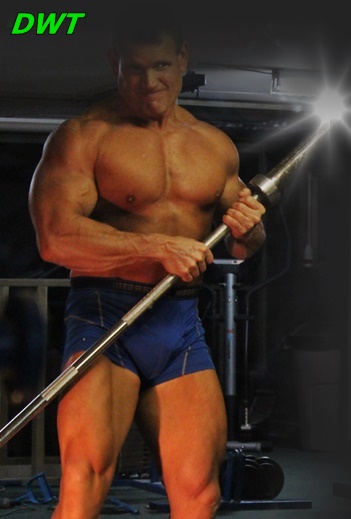
The thing here is: in bodybuilding, there’s really no one that can tell you the exact set range as an advanced intermediate or advanced bodybuilder; you need to experiment with your set ranges.
Strength training in bodybuilding does have its place, more to the point; you’re not there to swing or heave the weights, instead: it's the extension of hypertrophy or trauma to muscle fibre and connective tissue that excites new growth.
Also with that in mind, a rep range of 8 to 12 reps is a good place to start. Remember, this is about training for hypertrophy (muscle size), nothing more.
Try not to incorporate a lot of cheating movements with this type of training; If you’re not feeling a pump at this point...
Try setting the weight down and give a 10 or 15 second count and resume the set. Or have a set of dumbbells or barbell next to you 10 or 20 pounds lighter performing a drop-set to further your pump .
The Physical Part Of Bodybuilding
In all aspects of weight training including bodybuilding, the progression to higher achievement levels is acquired by stepping out of the comfort zone...
More to the point: you’re tearing muscle fiber/connective tissue to pieces while exerting greater force, energy/intensity, than most are used to, especially for some stubborn muscle groups.
A quote from Lee Haney 8 time Mr. Olympia winner: “the purpose of bodybuilding is not to annihilate but to stimulate”.
Using (TUT), 'time under tension', through exercise movement, is one of the fundamental bio-mechanics of bodybuilding. lets look at 5 different things this training principal brings to to the forefront of size gainz.
Time Under Tension:
- To increase muscle: avoid fully locking out or coming to a rest in any exercise, this ensures a longer time under direct tension.
- To increase muscle: make an effort to control or slow the eccentric portion of each exercise, from that of the concentric motion.
- To increase muscle: pay close attention to training form.
- To increase muscle: stay mentally focused while making a strong mental link to the muscles being worked, squeezing close to the top of each concentric peak.
- To increase muscle: try to keep rest intervals between 60 and 90 seconds max, keeping the pump stimulated. If you don’t have enough conditioning for these rest intervals, try to keep it less than two minutes if you can. This is generally the sweet spot and gives enough time to keep you using the desired loads to raise hypertrophy.
Results from training to heavy:
If you’re trying to build raw muscle and are under the assumption that lifting super heavy will get you there. Here are five different things that can rob the stimulating effects of hypertrophy from your muscle pump.
- To heavy: your inability to focus and make a link to the working muscles are impaired, from the struggle of simply keeping the weight moving.
- To heavy: months, even years of hard physical effort can slip past and you may very well see little or no gains. Gyms all over Canada and the US are full of guys simply trying to hard, lifting to heavy and not focusing on the value of the extension and contraction of each exercise: try not to become one of them; if building quality muscle size is the goal!

Add variety, stay focused, continually monitor yourself by changing rep, set and exercise routines up always helps large in part; with the mental monotony of bodybuilding.
In effect: bodybuilding is about learning its chemistry and physiology. Most people's bodies respond better to changes in stimuli...
Over 90% of the bodybuilders I ever worked-out with always continued with gains if they weren't afraid to change. Change is where growth occurs, change will keep you as a bodybuilder-returning to the gym.
It is not a question of if; but when you hit a training plateau, some solid rest and change are the two biggest things most bodybuilders miss on the road to recovery and growth.
You can't have one without the other, a full recovery stimulates and regenerates new growth.
The problem with change in regards to strength training vs bodybuilding is: people are often afraid to step out of there routines and comfort zones, or some people think that their routines will always work for them and never think to change them-up.
Nothing could be further from the truth, this is about continuously changing and evolving if you do, so will the body.
The Defining Difference in Strength Training vs Bodybuilding
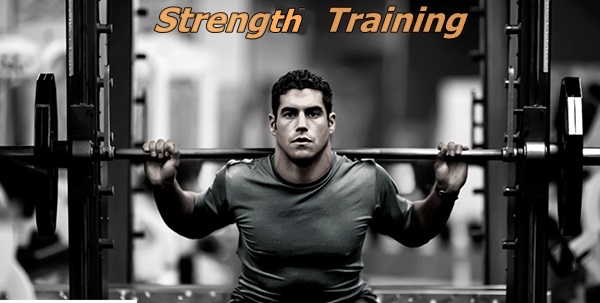
The art of strength training
Strength training is an essential part to any weight training routine. The whole idea of weight training in general: is to strengthen and condition the entire physical body.
Strength training has a greater neurological impact on the body and nervous system as intensity is greater, but over a shorter rep range or burst, whereas bodybuilding has its own discipline...
With that said, strength training is the breach of conditioning connective tissue, the nervous system and it's Nero pathways. As your athletic conditioning increases, the central nervous system adapts and coordinates to heavier lifting and the stress it inflicts.
The difference between strength training vs bodybuilding is: strength training is a lower gear while lifting; strength training effects the motor pathways carrying messages from the brain to the muscles and tendons.
If you're consistent; this usually becomes so frequently and vigorously bombarded that there's an increase in electrical impulse efficiency of travel along these routes.
As strength efficiency advances the body naturally adapts to a more effective use of force, much the same as in other power or strength based sports.
To increase overall body strength, once again: we will have to come back to the communication you have with your body regarding changes in stress related to the loads the bodies lifting.
To increase your success in strength training, set and make strength training goals and write them down, this solidifies this new thought process signifying; that this is an act you’re going to achieve, not merely make an attempt at!
Make your strength goals realistic and move forward with your training, take the time to appreciate that these are new mentally and physically challenging stresses.
When it comes to your body be sure to rest it, in order for these recuperative efforts to take effect for the next training session.
Strength Training
- First: you’ll be using less volume training, (not as many total sets).
- Fourth: rest time may have to be increased to 120 to 180 seconds between sets. A full recovery has to be made between sets… But, not to the point you cool down.
Rest periods can seem and feel eternal between sets when you compare strength training vs bodybuilding programs. To make your strength training routine and efforts effective you should now be training with 85 to 95% of your (one rep max); after you’re warmed up.
The difference in goal setting now becomes very different from that of hypertrophy training. You are not focusing on delivering efforts to building just size, the efforts now are more strictly focused on building strength...
As in all strength training efforts, you definitely will develop new muscle growth, 'depending on intensity levels', strength training produces a beneficial result of 'Myofibrillar hypertrophy'.
Greater attention and focus on strength training should be given to making full range of motion movements on assistant exercises, meaning: (multi-joint exercises) or compound-based movements.
90% of your total sets should focus around assistance-based exercises. Below is a list of exercises for:
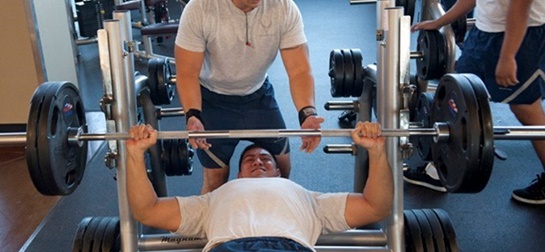
Upper body
- Flat, incline and decline barbell press… Always use dumbbells after heavy barbell lifts in your strength training program - keep your best energy reserves for the more demanding movements, these usually include the barbells.
- Weighted parallel bar dips, Dead lifts.
- Standing barbell shoulder presses, seated Smith machine shoulder presses.
- Heavier bent-over-barbell rows, wide grip chins, T-bar rows, as a secondary movement you can use dumbbells.
Lower body
- The barbell or kettle Bell squat.
- Vertical and angled leg sled presses.
- Barbell walking lunges performed after squatting.
- Bent knee and stiff legged dead lifting with barbell.
- Dead lifting with heavier dumbbells, performed in the same manner as the barbell.
- Standing calf raises, donkey raises and toe presses on the leg sled.
These are a great series of exercise classics to start with, performing basic strength training exercises such as these will increase overall upper and lower body strength.
I would personally pick three exercises for upper or lower body depending on what area you’re training; breaking the body down into upper and lower will allow you to focus more intensely on these individual area...
Rather than just a blanket strength training workout for the whole body.
Note: keep in mind with most exercises regarding strength training vs bodybuilding, the focus of strength training should be on free weights including weighted or body-weight-based training. This is no-frills bare-bones simple, basic, strength training...
Why Strength Training?
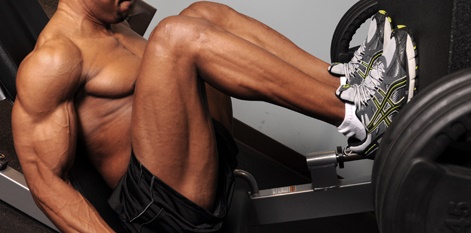
Whether your strength training or bodybuilding, strength training has its own foundation in all weight training programs.
Strength training vs bodybuilding, in my opinion can have many different goals attached to it. This of course depends on your age, physical condition, and what your specific goals are.
In strength training you do need to put emphasis on becoming stronger first: before focusing on hypertrophy training. The primary goal of strength training is: to abolish weak points in the strength curve of your main lifts.
As an example: in the bench press, If you’re struggling on the flat bench at becoming stronger, try using a spotter to help you with two or three sets on the last two or three repetitions, while focusing on the negative or lowering of the press exercise building strength in both directions...
On other days, try incline or decline barbell presses, to add to the dynamics of changing the stress to these different areas to benefit the whole of the pectoral and shoulder strength curve .
As with all strength training and bodybuilding exercises, visualize yourself becoming more powerful in the dead lift, squat, bench press etc. Visualization is key to achieving any goal!
In Summary:
The purpose of this page is to try to share with you the things that I have seen and experienced over the decades regarding strength training vs bodybuilding.
I shoot straight from the hip to give you honest fair information for drug-free lifters. It is unfair and unrealistic for the natural guy to expect to see the same results from the routines of others that use pharma's.

I don't personally use drugs, but...
Drugs are a choice you make, and a personal one. I begrudge no one for using or not using drugs; with or without them, you still have to make your way to the gym, period!
Raw Strength is the lower gear that summons motivation, forcing every athlete to overcome the desired obstacle by powering through the movement to reach the desired goal!
Bodybuilding and strength? Strength in the pursuit of bodybuilding is necessary and will always be a part of the training... but, should not always be relied on as the main factor and contributor to muscle size.
Attention to muscle contraction, timing, exercise control, time under tension while connecting to the body parts your training, and a willingness to grind it out over time, will test any athlete - but this grind is where you find the perils of quality.
Let’s face it, it’s called bodybuilding for a reason, you must become very astute and in-tune to it.
So what’s
more important strength training or bodybuilding?
The simplest and easiest way I can answer that after over three decades of training is: for the most part, this depends large in part by what your goals are. If you wish to develop overall quality muscle mass, then both are!
If you are more interested in general conditioning using strength training as a tool to reach your conditioning or sports related goal, then strength training should be the tool you use the most.
You alone, must assess where your weak areas are and where you’re strong; train accordingly, and don’t be afraid to experiment...
I hope some light and understanding was able to be shed on strength training vs bodybuilding for you, as well as where some differences lie in these 2 different training styles. 'Good Luck'!
DWT

